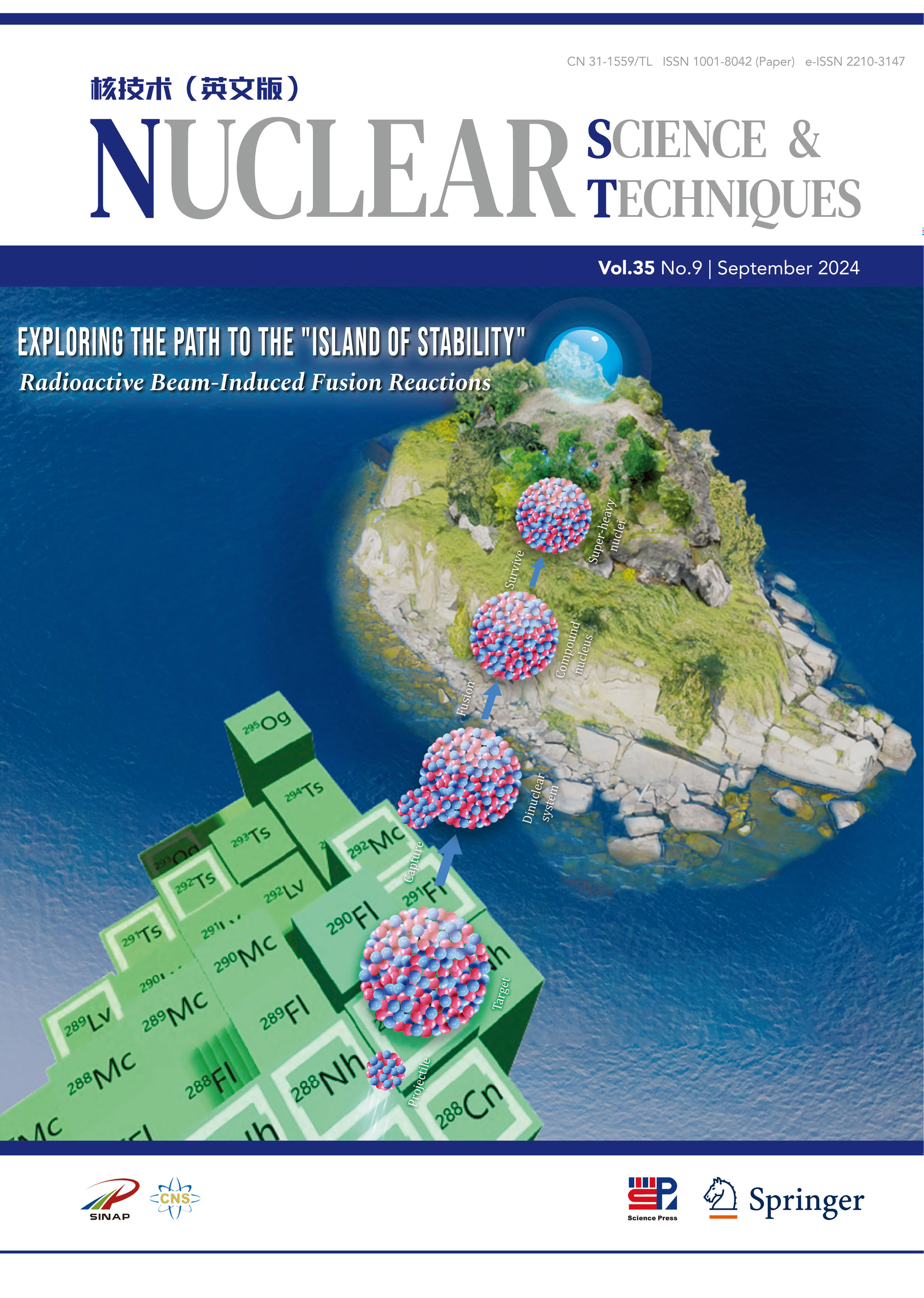The nuclei chart
The 3378 discovered nuclei.
The 3378 discovered nuclei.
321 transuranium nuclei.
Published on August 15, 2023
In this article, we introduce the development of transport models such as the dinuclear system (DNS) model, quantum molecular dynamics (QMD) type model, Boltzmann type model, and Time-dependent Hatree-Fock (TDHF) type model, and conclude with their latest applications in the synthesis of superheavy nuclei, especially in fusion reactions and multinucleon transfer reactions. In addition, various international large-scale scientific facilities, as well as their scientific objectives, and future plans, are also summarized.
Recommended citation: Zhang, Ming-Hao, et al. "Progress in transport models of heavy-ion collisions for the synthesis of superheavy nuclei." NUCLEAR TECHNIQUES,2023,46(08):137-145.
Download Paper
Published on January 25, 2024
Within the framework of the dinuclear system model, the experimentally accessible projectile-target combinations are predicted for the production of new superheavy elements with Z=119 and Z=120. The entrance channel effect and the isotopic dependence of targets and projectiles on the capture, fusion, and survival stages of the fusion reaction are discussed.
Recommended citation: Zhang, Ming-Hao, et al. "Predictions of synthesizing elements with Z= 119 and 120 in fusion reactions." Physical Review C 109.1 (2024): 014622.
Download Paper
Published on June 18, 2024
The synthesis of superheavy elements Z = 121 was systematically studied through combinations of stable projectiles with Z = 21–30 and targets with half-lives exceeding 50 d. The influence of mass asymmetry and isotopic dependence on the projectile and target nuclei was investigated in detail.
Recommended citation: Zhang, Ming-Hao, et al. "Possibilities for the synthesis of superheavy element Z= 121 in fusion reactions." Nuclear Science and Techniques 35.6 (2024): 95.
Download Paper
Published on September 04, 2024

The possible fusion reactions for synthesizing new double magic nucleus are investigated, with optimal reaction energy and evaporation residue cross section being predicted. This paper has been selected as the Cover Article for this issue of Nuclear Science and Techniques, and reported by phys.org.
Recommended citation: Zhang, Ming-Hao, et al. "Possibility of reaching the predicted center of the “island of stability” via the radioactive beam-induced fusion reactions." Nuclear Science and Techniques 35.9 (2024): 95.
Download Paper
Published on December 28, 2024
The 252Cf isotope produced at Oak Ridge National Laboratory is a promising target material for the synthesis of new superheavy nuclei through fusion reaction experiments. Within the framework of the dinuclear system model, the reaction systems with the 252Cf target are investigated for the synthesis of new isotopes with Z=118-123. Additionally, the radioactive beam-induced reactions based on the 252Cf target are investigated to reach the predicted neutron shell closure N = 184. The predicted results fall below the current detection limitation, indicating the necessity for advancement in both accelerator and detection techniques, as well as exploration of alternative reaction mechanisms.
Recommended citation: Zhang, Ming-Hao, et al. "Predictions for the synthesis of new superheavy nuclei with 252Cf target." Chinese Physics C 49.6 (2025): 054107.
Download Paper
Published on February 14, 2025
Based on the dinuclear system model, we investigate the asymmetric fusion-evaporation reactions for producing unknown 279–281Nh and neutron-rich 287,288Nh isotopes, with the objective of filling the gap between cold and hot fusion reactions.
Recommended citation: Zhang, Ming-Hao, et al. "Predictions for the synthesis of unknown 279–281Nh and 287,288Nh isotopes." Physical Review C 111.2 (2025): 024611.
Download Paper
Published on August 14, 2025
This review provides a comprehensive overview of the latest advancements in superheavy nuclei synthesis, focusing on both the experimental and theoretical developments. We summarizes the primary synthesis methods the experimental plans and theoretical predictions for synthesizing new superheavy elements. Future directions offering new pathways for discovering unknown superheavy nuclei are also discussed.
Recommended citation: Zhang, Ming-Hao, et al. "Progress on the synthesis of superheavy nuclei." Nuclear Science and Techniques 36.11 (2025): 204.
Download Paper
Published on August 16, 2025
The isotopic dependence of the Plutonium and Curium targets in the hot fusion reaction is investigated.
Recommended citation: Zhang, Ming-Hao, et al. "Investigation of the isotopic dependence in the synthesis of superheavy nuclei with Plutonium and Curium targets." accepted by Nuclear Science and Techniques
Download Paper
Undergraduate course, University 1, Department, 2014
This is a description of a teaching experience. You can use markdown like any other post.
Workshop, University 1, Department, 2015
This is a description of a teaching experience. You can use markdown like any other post.